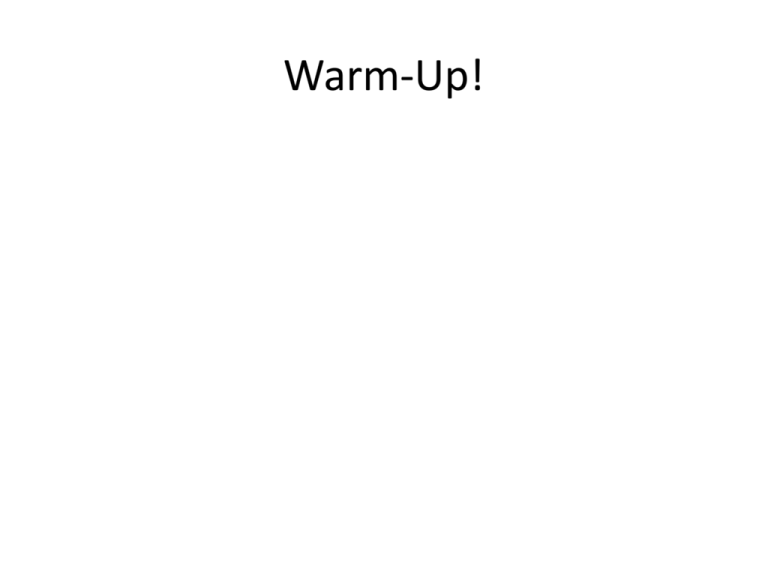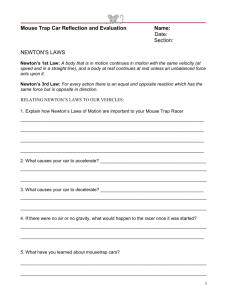Document
advertisement

Warm-Up! Do objects stop moving once they are set in motion in space? A. Never B. Always C. No, unless something gets in the way Which set of arrows do not represent equal and opposite force vectors? A. F1 F2 B. F1 F2 C. F1 F2 Inertia and Newton’s Laws Isaac Newton • 18th Century Scientist • Newton’s 3 Laws of Motion • Newton’s Law of Gravitation Galileo’s Thought Experiment © The Physics Classroom, Tom Henderson 1996-2007 Newton’s Thought Experiment This thought experiment lead to Newton’s First Law. © The Physics Classroom, Tom Henderson 1996-2007 Newton’s 1st Law of Motion • Objects will not change their motion without help – force. • INERTIA is this resistance to change in motion • MASS is how we measure inertia • The boulder example Balanced Forces • Forces can be applied but inertia is overcome only if unbalanced forces exist – Leggo my Eggo. • Balanced forces result in constant motion Constant Motion • Motion which is either stationary (0) or not accelerating and in a straight line Forces and Equilibrium • If the net force (SF) on a body is zero, it is in equilibrium. • An object in equilibrium may be moving relative to us (dynamic equilibrium). • An object in equilibrium may appear to be at rest (static equilibrium). Newton’s First Law • Newton’s 1st Law is also called the Law of Inertia. • A body stays at rest or at constant velocity unless acted upon by an unbalanced force. • This law is commonly applied to the horizontal component of velocity, which is assumed not to change during the flight of a projectile. • SF = 0 The Walking Man • http://phet.colorado.edu/sims/movingman/moving-man_en.jnlp Sample Problem: Three forces act upon a 3.0 kg body moving at constant velocity. F1 = (4i – 6j + k) N and F2 = (i – 2j - 8k) N. Find F3. Newton’s Second Law • Newton’s 2nd Law says that a body acted upon by a net unbalanced force will accelerate. • The acceleration is proportional to the net force and inversely proportional to the mass. It is in the direction of the net force. • SF = ma • Sample Problem: Two forces, F1 = (4i – 6j + k) N and F2 = (i – 2j - 8k) N, act upon a body of mass 3.0 kg. No other forces act upon the body at this time. What do you know must be true? Newton’s Third Law • Newton’s 3rd Law is commonly stated “for every action there exists an equal and opposite reaction”. • If A exerts a force F on B, then B exerts a force of -F on A.





